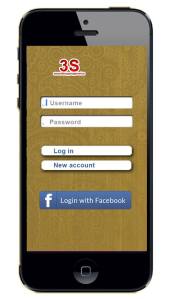Scenario 1 – Fast Shopping
Raul is a 29 year old sales representative. He is happy with his well-paying job, but working all the time is the reason why he has no girlfriend and he needs to do his shopping himself. Raul usually has no complete shopping list and therefore he tends to wonder around the store picking up things he randomly remembers. If he had a list he could constantly include new items before entering the store and be out of the store quicker.
One day Raul hears about an app called Smartshoppingservice that he finds interesting. He installs it to his phone and creates his first shopping list. Over the next two days he often remembers items he should buy and instantly adds them to the interactive shopping list.
After a hard day at work he goes to his local supermarket and starts looking for things on his shopping list. Surprisingly he sees that picking up all the items that way takes less time than usual. While being the 7th person in line waiting to pay for their good Raul notices the self checkout button on the side of the application and decides to try out the feature. In less than a minute all the items have been scanned and Raul finds himself proceeding with checkout on his phone. 30 seconds later the payment is done and Raul walks past those 6 people who still wait in the line, looking unhappy and tired.
Questions:
Would that scenario be something you would see yourself acting in?
Does the course of actions seem logical?
Would you change anything in the process?
Is there something you would want to add to the process?
Scenario 2 – Easy Usability
Peeter has worked in multiple companies, owned his own little business and finally got elected to the town council. He feels successful and at his prime. Peeter likes behaving as if he was 30, that’s why he bought a sportier car, owns a hip new phone and tries out different new applications – this is how he also found Smartshoppingservice. He sees this new app useful but he’s afraid it can be a bit too hard to use.
When Peeter activates the application he first looks for the activities the application offers. He browses through every window to understand everything. One he has gone through the app he creates his first shopping list. Peeter types in the first letters of an item and browses through different options offered by autocomplete. After inserting first 4 items “milk “TERE””, beer “SakuHele”, bread “Rukkipala” and coffee “Löfbergslila” he remembers that he can also scan the items he has at home to make the process easier.
Once the first item is scanned he feels satisfaction knowing that at least he can use that part of the system.
Questions:
Would that scenario be something you would see yourself acting in?
Does the course of actions seem logical?
Would you change anything in the process?
Is there something you would want to add to the process?
Scenario 3 – Updating the shopping list
Anna recently graduated from the university and received her bachelor’s degree. Despite the fact that currently she holds the degree in psychology, Anna is unemployed and is staying at home. Reason of this is that she currently raises her little twin boys. However she is lucky with the marriage, her beloved husband recently gifted her with an iPhone which greatly eases her life.
As mostly Anna has to remain at home, her husband is the one who does the shopping, however she is very glad that both of them use Smartshoppingservice application on their phones and Anna is able to make changes in the shopping list from home. For this she opens an application, scrolls down the shopping items, ticks the products about which she changed her mind and withdraws them from the list or adds new ingredients into the recipe and then transfers them from the recipe into the list. Updates are appearing instantly on both of the phones and the list is ready for the husband before he lives his office and heads till the supermarket.
Questions:
Does the scenario look realistic?
Does the course of actions seem logical?
Would you change anything in the process?
Is there something you would want to add to the process?
Scenario 4 – Flexible shopping
Lui is a textile designer and a young father, having two daughters. He has an unorganized working schedule as most of the art field workers. Like all of the designers Lui as well loves everything that has a good design, that’s why he purchased his brand new smart phone and with the same reason started to use Smartshoppingservice application. According to him, this app is relatively easy to use due to its design. However besides his job, he hates completing everyday tasks, especially when it comes about shopping. He rarely remembers the names of the brands of the products he has to buy.
His wife who is a doctor is very picky about the healthy products. As usually she is the one who composes a shopping list for the whole family she as well uses Smartshoppingservice app. She is crazy about truly “green” companies and while creating the shopping list she checks the availability of those products in the supermarkets, then ticks all of the desired products and in the end adds them in the shopping list. This way she eases the job for the Lui as well, who later goes in the supermarket and quickly grabs the products.
Questions:
Does the scenario look realistic?
Does the course of actions seem logical?
Would you change anything in the process?
Is there something you would want to add to the process?











